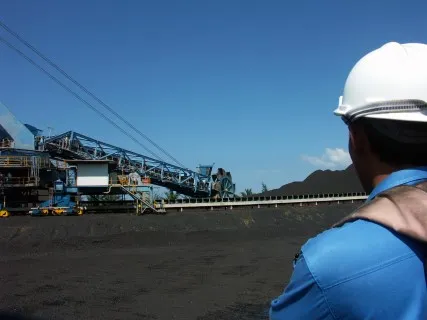
Coal-fired power gets another punch as South Korea elects new leader
President Moon vows closing 10 old coal plants earlier than scheduled.
Moon Jae-In’s election as president of South Korea holds potentially significant ramifications for global seaborne thermal coal markets, according to the Institute for Energy Economics and Financial Analysis.
South Korea is Asia’s fourth-largest economy and the fourth-largest importer of coal globally, accounting for over 10 percent of world thermal coal import demand.
As the only remaining growth market of significant size, it has long been identified by the coal industry as a key source of ongoing viability—and Moon’s ascension may well snuff out a bright spot in the bleak overall outlook for seaborne coal used for electricity generation.
Here's more from IEEFA:
Among Moon’s election promises are: Idling old coal-fired plants during April and May (when fine dust levels tend to peak); Permanently closing 10 aged coal-fired plants earlier than scheduled; Reassessing plans to construct nine new coal-fired plants; Increasing South Korea’s commitment to renewable energy to 20 percent by 2030.
South Korea currently maintains more than 50 coal-fired power plants, producing around 40 percent of the country’s electricity (nuclear provides 30 percent, LNG 25 percent, oil 3 percent and renewables just 2 percent). Under pre-Moon policies 20 new coal-fired plants were to have been built by 2022 (in addition to 11 new nuclear reactors).
To be sure, Moon’s policies are not exactly revolutionary. In fact, they are entirely consistent with the technology-driven energy market transformation that is taking place globally—and in Asia in particular.
IEEFA sees Japanese thermal electricity generation falling 2 to 3 percent annually over the next decade, for example. We know that China’s coal consumption peaked in 2013 and we note that Taiwan has recently committed to a major realignment toward renewable energy and energy efficiency, including a “20 percent renewables by 2025” target. Vietnam is pursuing a similar shift.
Most strikingly, India continues to reiterate its commitment to a target of zero thermal coal imports by 2020. Solar-cost trends in India are especially striking (the latest reported solar tariff came in a Rs2.62/kWh, down 40 percent off previous records just 16 months ago) makes the country’s energy policy goals increasingly cost effective and achievable.
As governments all across Asia seek to rejigger their energy economies toward cheaper, domestic renewable energy, it should come as no surprise that South Korea is embracing the trend.








![Cross Domain [Manu + SBR + ABF + ABR + FMCG + HBR + ]](https://cmg-qa.s3.ap-southeast-1.amazonaws.com/s3fs-public/styles/exclusive_featured_article/public/2025-01/earth-3537401_1920_4.jpg.webp?itok=WaRpTJwE)
![Cross Domain [SBR + ABR]](https://cmg-qa.s3.ap-southeast-1.amazonaws.com/s3fs-public/styles/exclusive_featured_article/public/2025-01/pexels-jahoo-867092-2_1.jpg.webp?itok=o7MUL1oO)









 Advertise
Advertise


